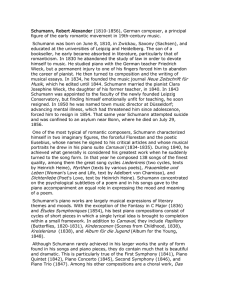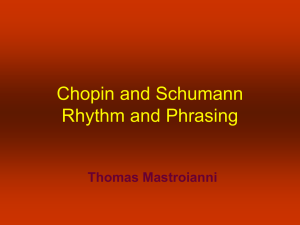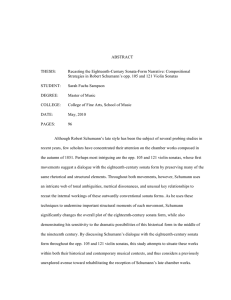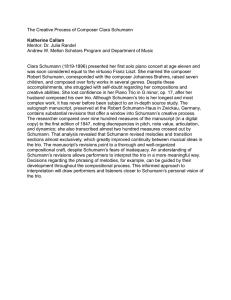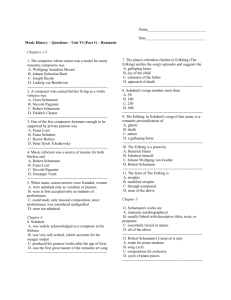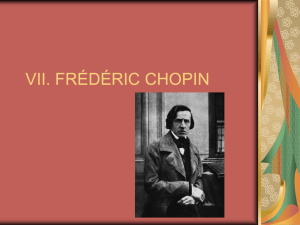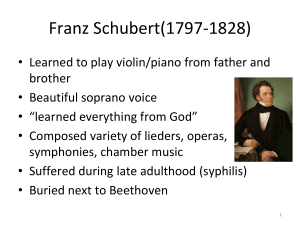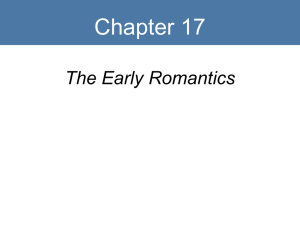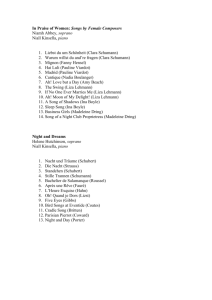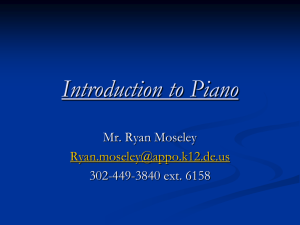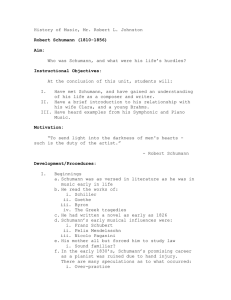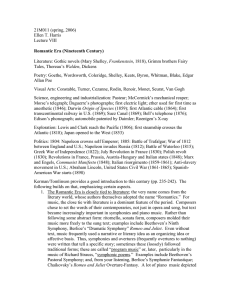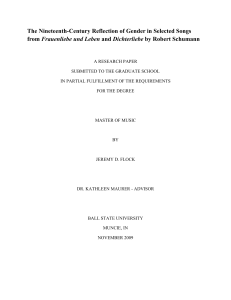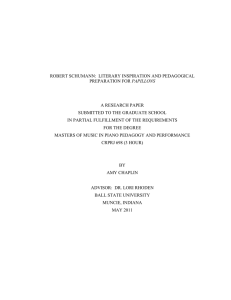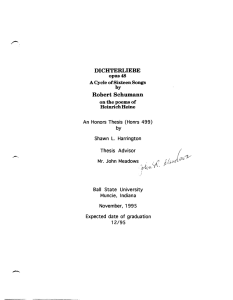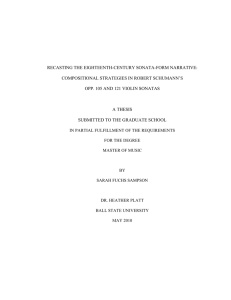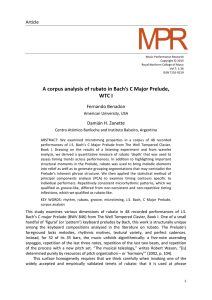17.0
advertisement
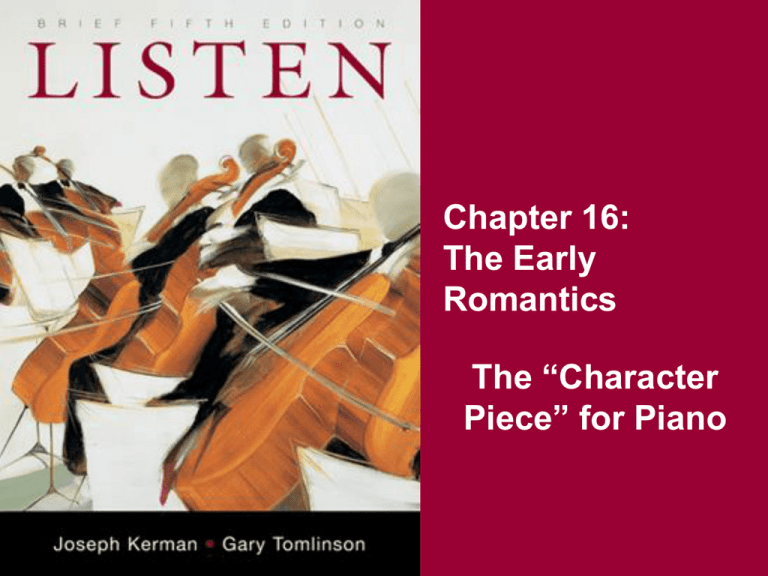
Chapter 16: The Early Romantics The “Character Piece” for Piano Key Terms Character piece Étude Nocturne The “Character Piece” for Piano Profusion of Romantic character pieces • • • • Short piano pieces – “miniatures” They convey a distinct mood or character Simple forms use repetition, contrast, return Composed at all levels of difficulty They appeared under many names • Nocturnes, ballades, scherzos, preludes, waltzes, études, Scenes from Childhood, Musical Moments, Songs without Words, Album Leaves, Pictures at an Exhibition, etc. Schubert, Moment Musical No. 2 in A-flat Open-ended title – any mood possible • No. 2 creates a Romantic lyricism, nostalgia Form uses contrast & return • A B A’ (coda) B’ A’’ coda • Lyric A theme uses a gentle rocking figure • Extroverted, emotive B theme uses a steady moving accompaniment • A’ with coda feels like the end • Sudden, anguished fortissimo B’ comes as a surprise (in F-sharp minor!) Schumann, Carnaval His style has warmth & privacy (innigkeit) • German innig = inward, intimate, heartfelt He often assembled piano pieces in sets • Often with interesting musical connections Carnaval is one of these collections • Musical portraits at a Mardi Gras ball • 20 short character pieces portray – Schumann, girlfriends Estrella & Chiarina, composers Paganini & Chopin, and commedia dell’arte figures Pierrot, Harlequin, & Columbine R. Schumann, “Eusebius” (1) Schumann’s pen name for his tender, dreamy self Rhythmically very free • Use of quintuplets, triplets, & rubato • Creates a vague, languorous effect R. Schumann, “Eusebius” (2) Form based on repetition, contrast, return • aa ba b’a’ ba • b is a more yearning variant of a • b’a’ is played in octaves with thicker chords & use of pedal R. Schumann, “Florestan” Schumann’s pen name for his impetuous, mercurial other self Opening outburst follows Eusebius’s tentative ending • Built out of a single, explosive motive Moves in fits and starts • Abrupt tempo changes go beyond mere rubato • Ending gets faster & faster, ends abruptly Form based on repetition, variation • a a’ a’’ a’’’ Frédéric Chopin (1810-1849) Born near Warsaw, later settled in Paris Pianist of miraculous ability & exquisite delicacy (but performed rarely in public) • Earned rave review from Schumann at age 20 Wrote almost exclusively for the piano • Preludes, nocturnes, études, ballades, mazurkas, polonaises, sonatas, concertos Moved in high society & artistic circles – Delacroix, Balzac, Liszt, George Sand! Frail health – died of tuberculosis Chopin, Nocturne in F-sharp (1) “Night pieces” – establish various moods • From languid serenade to dark, secret lament F-sharp Nocturne opens with elegant tune • Singing quality with melodic decorations • Relaxed rubato & subtle chromaticism Chopin, Nocturne in F-sharp (2) Form uses repetition, contrast, return • a a’ b c a’’ coda • The main tune (a a’ b) is interrupted by c • Fragmentary yet intense return of a’’ Conclusions Character Pieces A typical “miniature” genre Goal – to express a single, distinct mood They use simple, sectional forms • Repetition, contrast, return, variation • Thematic unity achieved through recurring motives & similarity of mood They account for the majority of Romantic solo piano music
